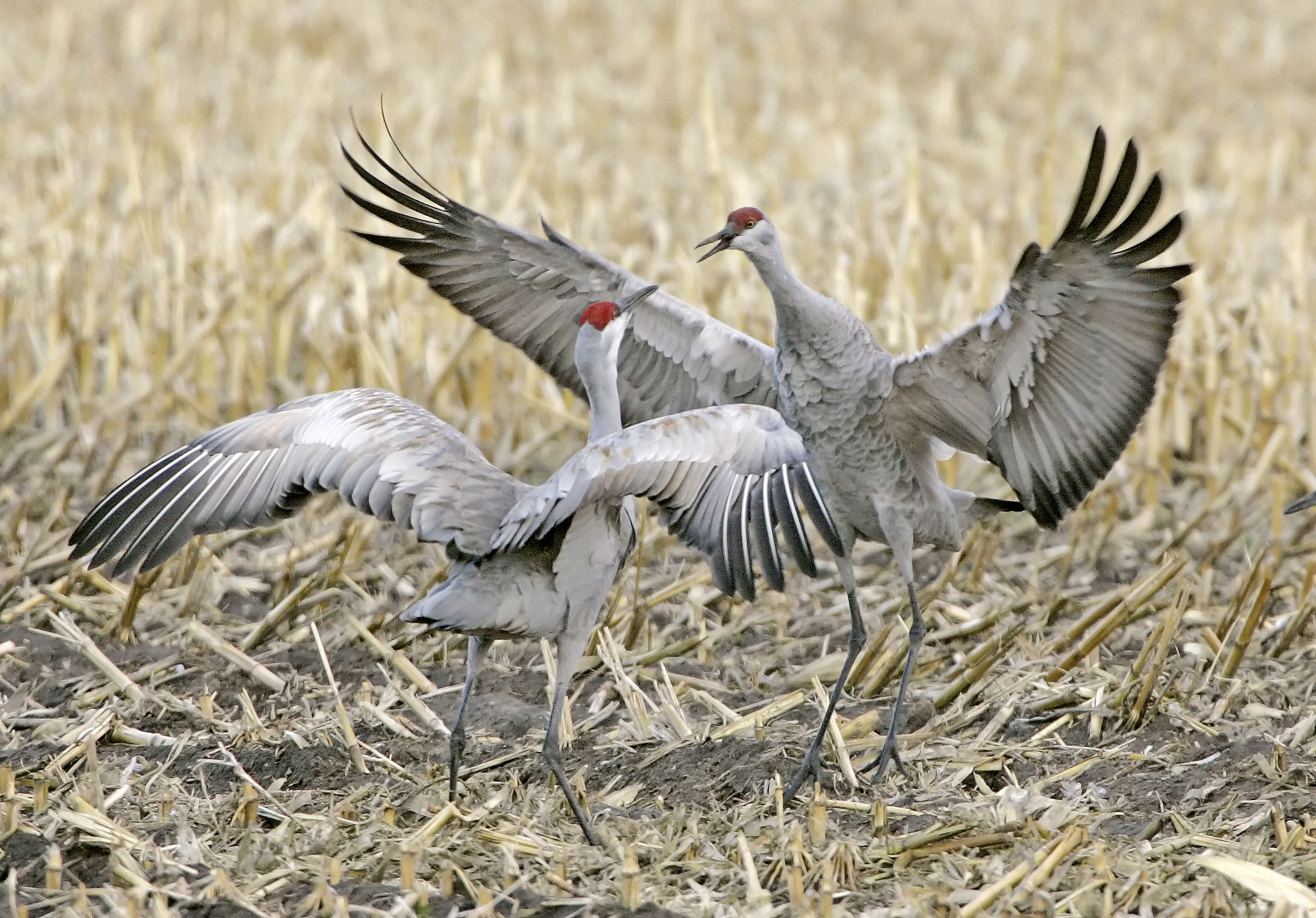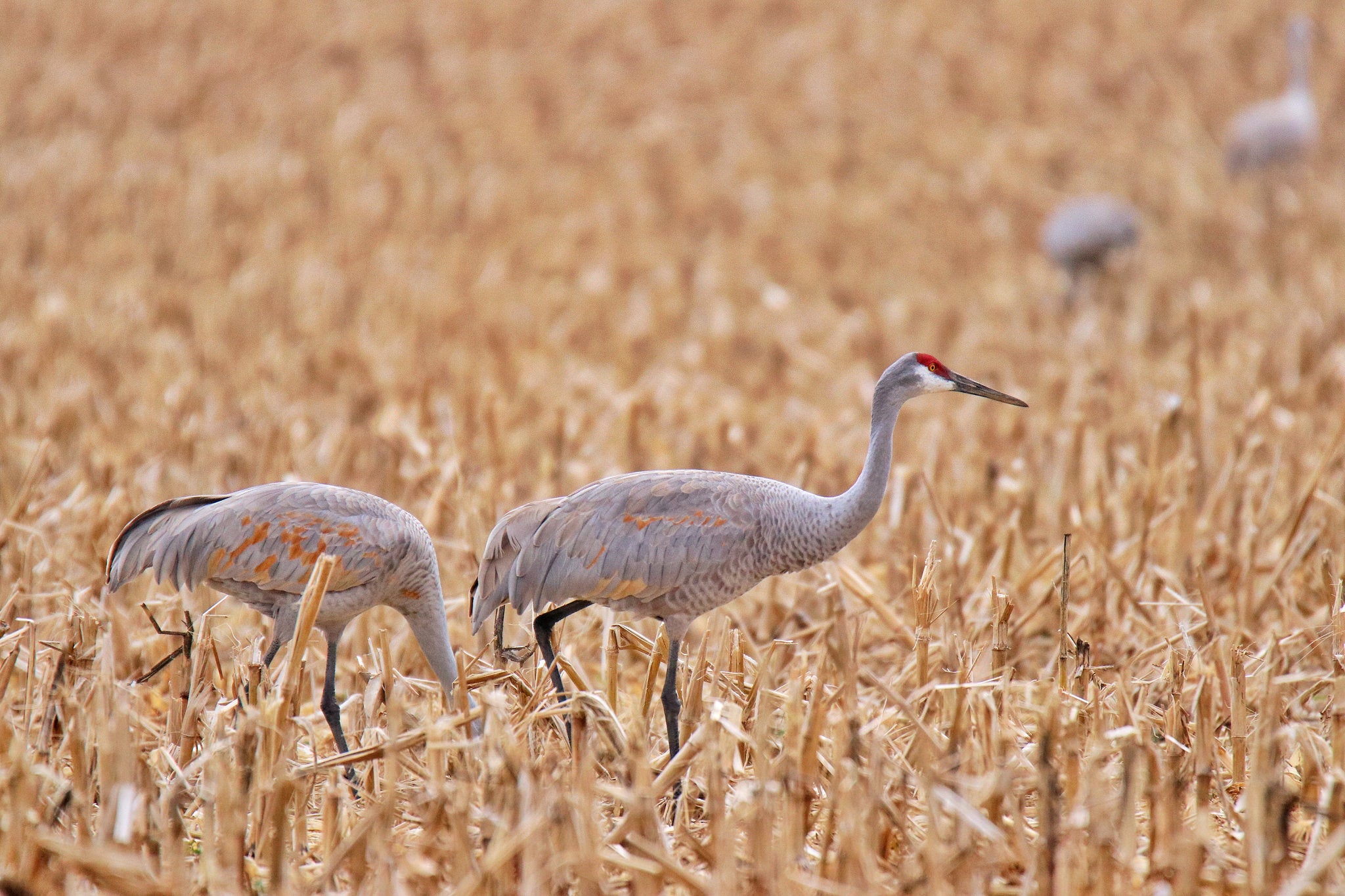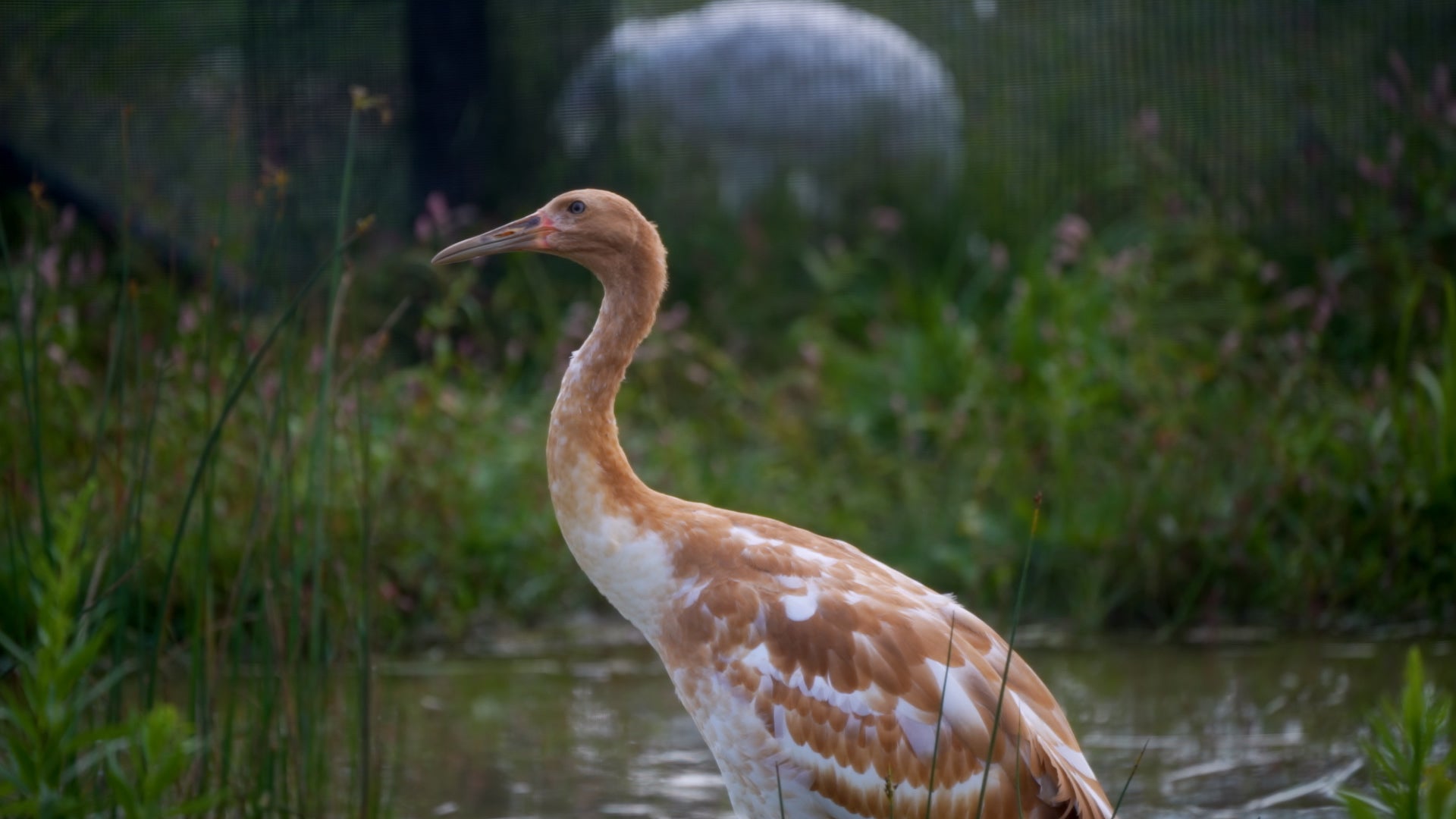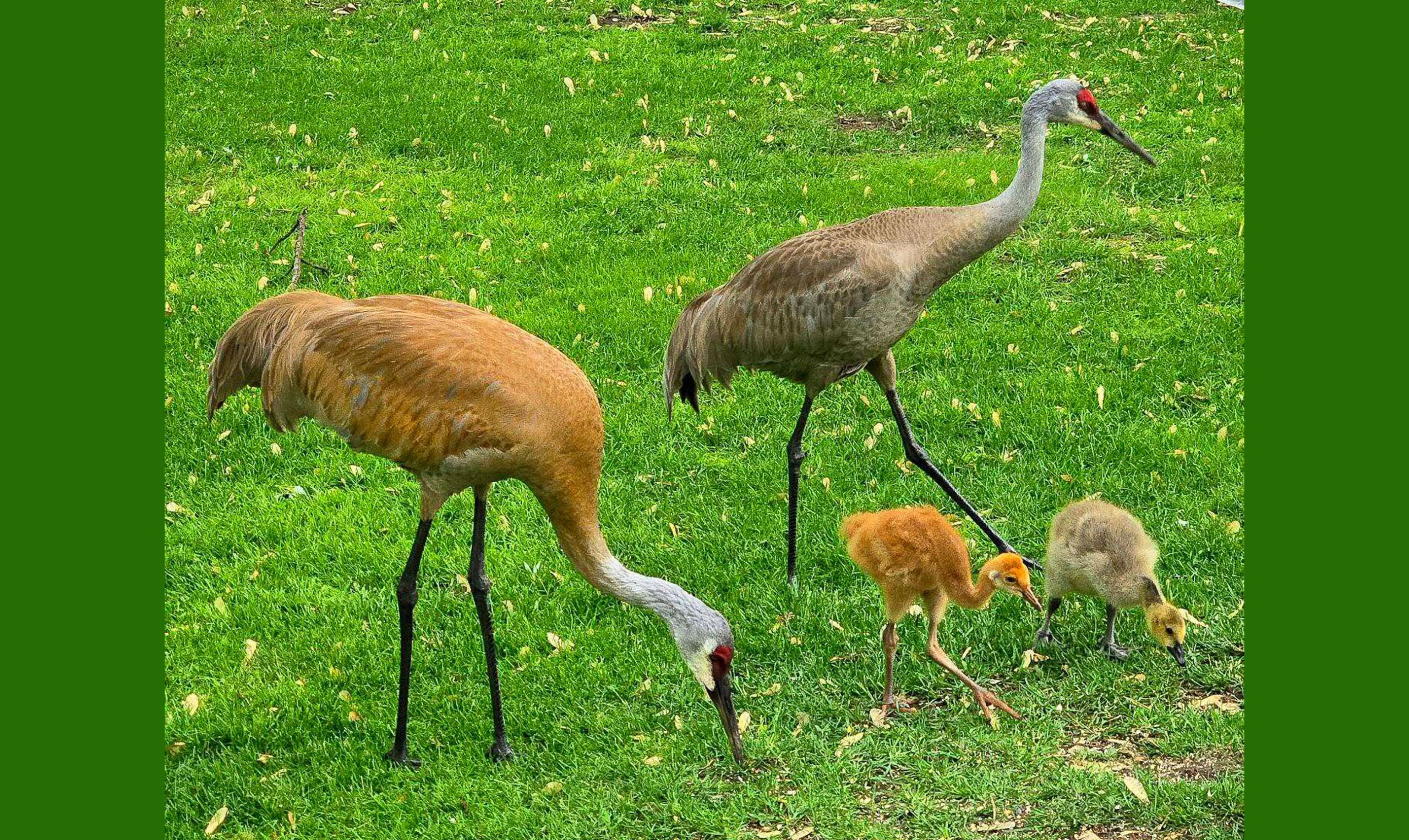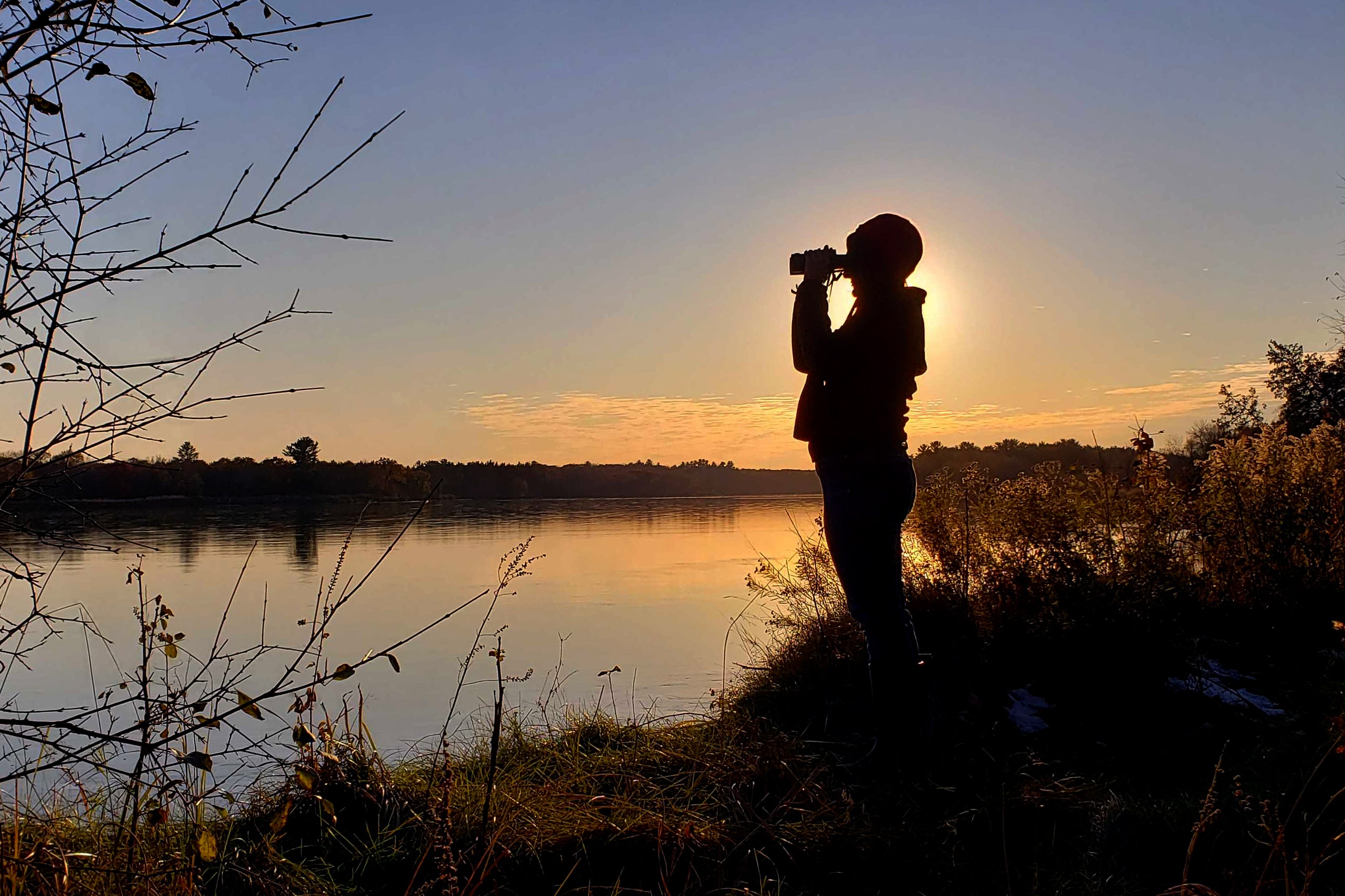Volunteer birders are needed for an annual census of sandhill and whooping cranes as the long-legged, long-necked birds return to Wisconsin.
The Midwest Crane Count on April 15 is an annual event organized by the Baraboo-based International Crane Foundation. It has grown to include more than 1,800 volunteers in seven Midwestern states.
Spotters will travel to local wetlands and other birding spots to look and listen for sandhill cranes, as well as much-rarer whooping cranes.
News with a little more humanity
WPR’s “Wisconsin Today” newsletter keeps you connected to the state you love without feeling overwhelmed. No paywall. No agenda. No corporate filter.
“They’re helping us look at the population trends,” said Sarah Gavney-Moore, who coordinates the count. “And they’re looking at new areas where cranes are colonizing.”
The Baraboo-based International Crane Foundation started organizing sandhill crane counts in Wisconsin in 1976, when a couple of hundred volunteers identified only a few dozen cranes. By 1985, when the search first covered most of the state, the birds’ population was estimated at about 6,000.
Wetlands protections and a hunting ban on sandhill cranes in Wisconsin have caused that population to grow steadily in the years since then. Last year, the count identified more than 13,000 sandhill cranes in Wisconsin; the state is estimated to have as many as 50,000 of the birds in total.
Whooping cranes remain an endangered species. In 1941, there were only 15 breeding pairs left in the world. Their population has slowly grown as well. Gavney-Moore said today about 76 of them nest in Wisconsin, mostly in the south-central part of the state.
In Wisconsin, the strong rebound of the sandhill crane population has led to calls for the state to allow a hunt. One argument against that hunt is that it could endanger the state’s fragile whooping crane population.
Cranes are classic snowbirds, spending their winters in the warmer climes of the southeastern U.S. But they begin to return to Wisconsin as early as mid-February to begin scouting out nesting spots.
“It’s kind of a case of the early bird gets the worm,” Gavney-Moore said. “If a pair or an individual is coming up earlier, they get the best territory. And having that best territory … gives them the best chance of raising a family and having a successful year.”
But April is a good time for the census, she said, because by then the population has returned, but may not have settled into their nests. That means “they’re not as secretive,” Gavney-Moore said, “So you have a better chance of seeing and hearing them during the survey.”
Those interested in joining the survey can visit cranecount.org to find county coordinators in their area who can direct them to good crane-spotting sites and offer other advice. The Crane Foundation’s annual report from previous counts is available on the site, as well.
Wisconsin Public Radio, © Copyright 2026, Board of Regents of the University of Wisconsin System and Wisconsin Educational Communications Board.

